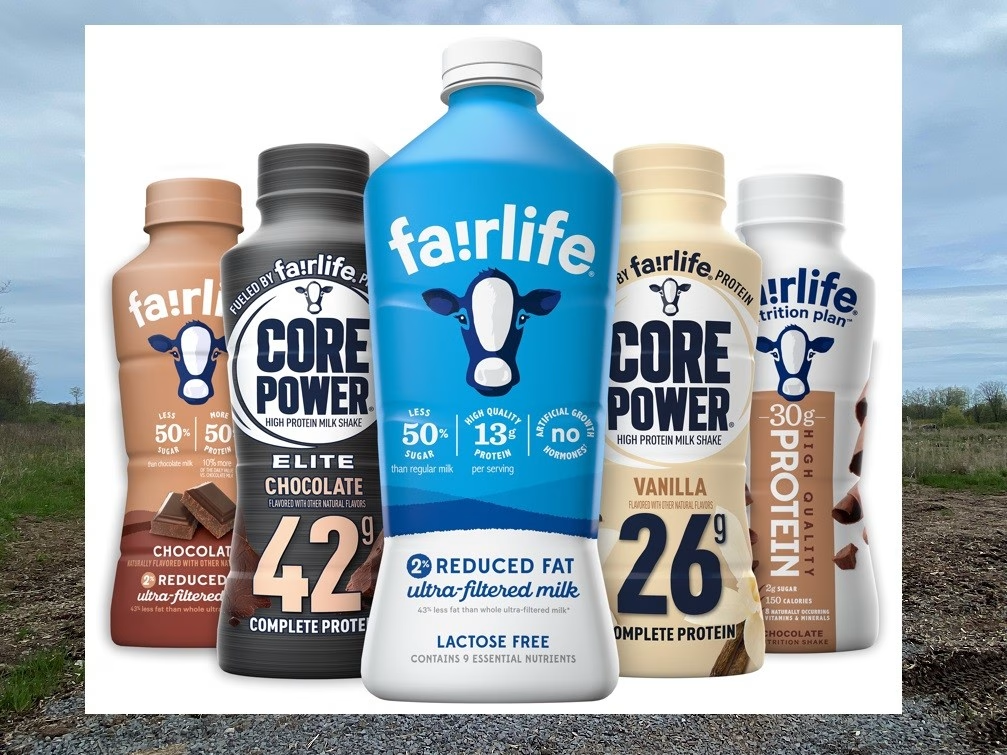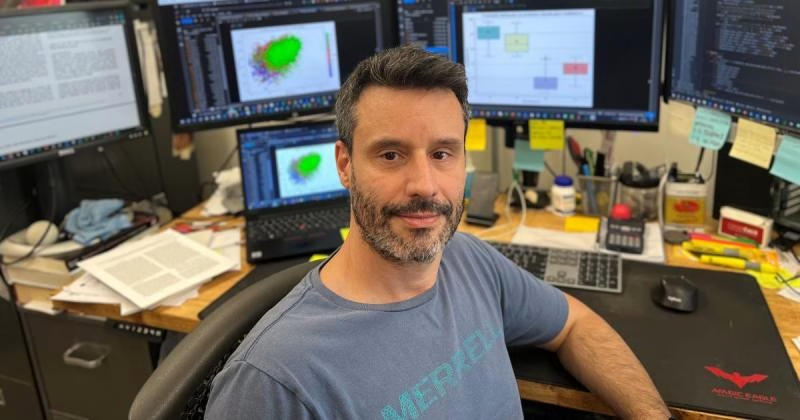Explore effective strategies to fortify your beef x dairy program against market volatility. Gain insights into managing unpredictability to safeguard your dairy farm‘s financial health.
Preparing for an unpredictable future in the dynamic dairy industry transcends mere strategy—it becomes an imperative. To shield a beef x dairy program from the vagaries of the market, one must adopt practices and make informed decisions that ensure sustainability and profitability, regardless of fluctuating conditions and unforeseen challenges. This path demands foresight, adaptability, and an in-depth grasp of the interconnected dairy and beef markets.
The critical nature of adapting to an unpredictable market must be considered. Dairy farmers must navigate variable milk prices, evolving consumer demands, and economic pressures—all of which influence profitability. By proactively preparing for these fluctuations, farmers can protect their investments and build a resilient business model. This involves reacting to current trends, forecasting future shifts, and adjusting their strategies accordingly.
The strategies we are about to delve into are not just theoretical concepts, but practical tools that can make a real difference in your beef x dairy operations. They are indispensable in navigating the intricate landscape of the dairy industry and ensuring long-term profitability and sustainability.
- Diversification: Mitigating reliance on a singular income stream by exploring varied opportunities within the beef x dairy paradigm.
- Genetic Selection: Selecting optimal breeds and genetics to enhance beef and dairy outputs.
- Market Analysis: Regularly assessing market trends to make informed, agile decisions.
- Risk Management: Utilizing financial instruments and insurance to safeguard against potential setbacks.
- Sustainable Practices: Embracing eco-friendly methods to fortify long-term sustainability.
“The only way to make sense of change is to plunge into it, move with it, and join the dance.” — Alan Watts.
By embracing these strategies, you are not just preparing for the future, but also equipping your dairy farm to thrive amid uncertainties. These strategies can help you maintain a resilient and profitable operation, even in the face of change.
Understanding Market Fluctuations: The Role of Supply and Demand
Understanding contemporary trends in the beef and dairy sector is paramount. The robust demand for beef-sired dairy cross steers, propelled by a significant reduction in the U.S. beef cattle inventory and consumer predilection for premium beef, has given dairy farms an advantageous position. By producing more beef x dairy calves, dairy farmers seize the opportunity to generate additional revenue from premium market prices. Dairy operations are adapting swiftly to maximize these high-value returns.
Market unpredictability, however, presents multifaceted challenges. Variations in feeder cattle supply, fluctuating commodity prices—mainly corn—and erratic climatic conditions affecting feed availability and livestock health contribute to this uncertainty. Moreover, global economic shifts and evolving trade policies further complicate the landscape, demanding heightened vigilance and adaptability from dairy farmers.
The ramifications of market fluctuations on profitability cannot be overstated. While elevated beef-sired dairy cross-steer prices can significantly boost short-term revenue, the inevitable price corrections can strain profitability. However, with the strategic measures we propose, you can mitigate these risks and ensure long-term sustainability. This involves diversifying breeding programs, optimizing feed efficiency, and enhancing direct marketing strategies. Proactive management of these variables is crucial for maintaining resilience amidst economic oscillations.
Strategies to Stabilize Your Beef x Dairy Program
Diversification is paramount in navigating an uncertain future. Elevate the value of your beef x dairy calves by integrating superior genetics and optimized feeding regimens, thereby securing higher market premiums.
Investigate emerging market opportunities such as niche sectors, including organic or grass-fed beef programs. Adopting innovative tactics like direct-to-consumer sales can significantly boost profitability and market penetration.
Forge strategic partnerships with feedlots, meat processors, and fellow dairy producers to ensure stability. Collaborative ventures and co-op models are essential for balancing risks and rewards effectively.
Utilizing Technology and Innovation for Better Outcomes
Embracing cutting-edge technology and innovation is paramount for navigating the uncertainties of the beef x dairy market. Data-driven decision-making empowers farmers to harness historical and real-time data to forecast trends and refine breeding programs, boosting profitability and operational efficiency. This approach also enhances animal health monitoring.
Precision farming techniques leveraging GPS and IoT devices offer invaluable insights into feed management and environmental conditions. Such techniques ensure optimal resource usage, minimize waste, and bolster farm sustainability. Precision farming additionally allows for targeted livestock care.
Investing in automated feeding, milking, and waste management systems can revolutionize dairy farming. Automation reduces labor costs and guarantees consistency, enabling farmers to concentrate on strategic roles and long-term planning.
Mitigating Risks in Your Beef x Dairy Program
Effective risk management is paramount to sustaining a robust beef x dairy program in an unpredictable environment. Dairy farmers must embrace a multifaceted strategy to navigate market fluctuations and ensure operational stability.
“The ability to foresee and manage risks can make the difference between a thriving operation and one that falters.”
Leveraging hedging strategies is crucial to mitigate against market volatility. Utilizing futures contracts and options empowers farmers to secure favorable prices.
Implementing contingency plans for unpredictable events, such as natural disasters or sudden market shifts, allows quick adjustments to minimize potential losses.
Vigilantly monitoring market trends and refining strategies is essential for staying ahead of the curve. Regular data analysis and keeping abreast of industry developments can guide responsive practices.
- Deploy hedging strategies.
- Establish contingency plans.
- Continuously monitor market trends.
The Bottom Line
In the current beef x dairy market landscape, the pressing demand for calves—catalyzed by industry consolidation and a sharp decline in beef cattle inventory—offers dairy farmers a unique opportunity. However, the ongoing price surge, propelled by the scarcity of feeder cattle and lower corn prices, is ephemeral. Projections of a cyclical peak in fed beef prices within the next three to four years signify imminent market corrections.
These observations underscore the necessity for dairy farmers to future-proof their operations in a sector where change remains constant, depending solely on presently advantageous conditions without a strategic blueprint, which is fraught with risk. The volatile market demands a comprehensive approach that includes technological innovation, risk mitigation, and sustainable long-term planning.
We encourage dairy farmers to adopt proactive measures to strengthen their beef x dairy initiatives. Your role in this is crucial. By embracing cutting-edge breeding technologies, instituting robust risk management frameworks, and persistently monitoring market dynamics, you can ensure your enterprises remain resilient and profitable, even in the face of uncertainty. The way forward entails adapting to change and actively crafting a sustainable future for the beef and dairy sector.
Key Takeaways:
In the volatile landscape of the dairy industry, proactive strategies and adaptive practices are paramount for maintaining profitability with beef x dairy programs. Key considerations include:
- Consolidation in the dairy industry has increased the desirability of beef x dairy calves due to improved logistics and large batch availability.
- The U.S. beef cattle inventory reaching a 73-year low has driven cattle buyers to source more from the dairy sector.
- Current high prices for beef x dairy calves are influenced by limited feeder cattle supply and lower corn prices, both of which are subject to change.
- A strategic re-evaluation of beef x dairy programs is essential to prepare for a market correction, which is anticipated within the next few years.
- Implementing stability-focused breeding programs and leveraging cutting-edge technology will be crucial for adapting to future market dynamics.
“Change is the only constant thing in life,” reminds us that dairy farmers must continuously evolve their strategies to navigate the unpredictable future of the beef x dairy market.
Summary: The dairy industry is facing a uncertain future due to increased demand for beef-sired dairy cross steers and a decrease in U.S. beef cattle inventory. To generate revenue, dairy farmers can produce more beef x dairy calves. However, market unpredictability presents challenges like fluctuating commodity prices, erratic climatic conditions, and variations in feeder cattle supply. To mitigate risks and ensure long-term sustainability, dairy farmers can diversify breeding programs, optimize feed efficiency, and enhance direct marketing strategies. Strategic partnerships with feedlots, meat processors, and fellow dairy producers are crucial. Embracing cutting-edge technology and innovation is essential for navigating the beef x dairy market. Data-driven decision-making, precision farming techniques, and automated systems can help farmers forecast trends and refine breeding programs. Effective risk management is crucial for sustaining a robust beef x dairy program in an unpredictable environment.
 Download “The Ultimate Dairy Breeders Guide to Beef on Dairy Integration” Now!
Download “The Ultimate Dairy Breeders Guide to Beef on Dairy Integration” Now!
Are you eager to discover the benefits of integrating beef genetics into your dairy herd? “The Ultimate Dairy Breeders Guide to Beef on Dairy Integration” is your key to enhancing productivity and profitability. This guide is explicitly designed for progressive dairy breeders, from choosing the best beef breeds for dairy integration to advanced genetic selection tips. Get practical management practices to elevate your breeding program. Understand the use of proven beef sires, from selection to offspring performance. Gain actionable insights through expert advice and real-world case studies. Learn about marketing, financial planning, and market assessment to maximize profitability. Dive into the world of beef-on-dairy integration. Leverage the latest genetic tools and technologies to enhance your livestock quality. By the end of this guide, you’ll make informed decisions, boost farm efficiency, and effectively diversify your business. Embark on this journey with us and unlock the full potential of your dairy herd with beef-on-dairy integration. Get Started!














